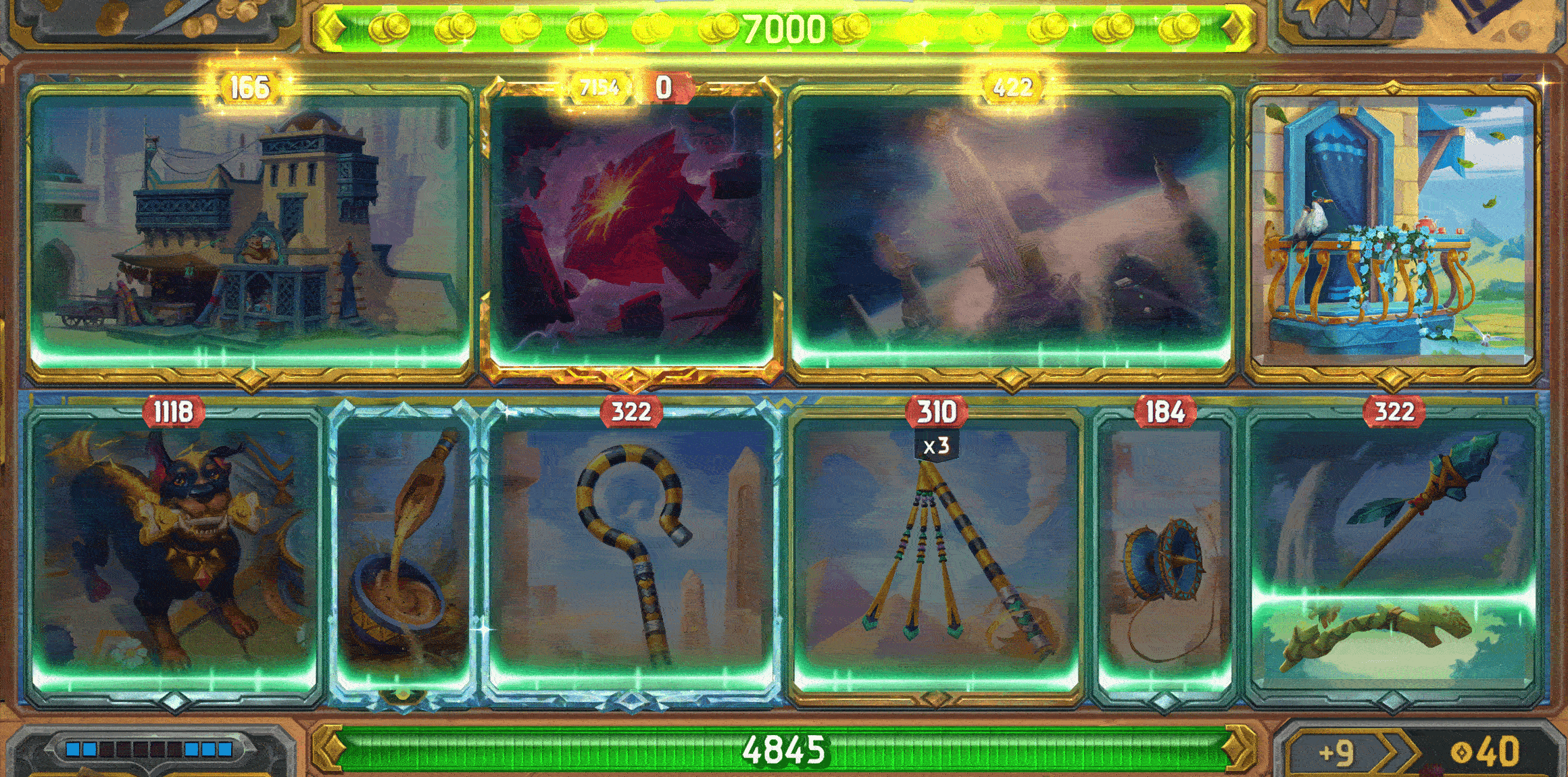Hero Design in The Bazaar: Speaking to Player Motivations
Tempo Storm have done a fantastic job with the fundamental designs behind the game’s heroes (playable classes).
The Bazaar (currently in closed beta) is a Skinner-box shopping autobattler, in which the player buys and sells items from various ‘merchants’ before having their board face off against an asynchronous snapshot of another player’s board at the same point in their ‘run’. The player can choose at the start to play various ‘heroes’ who define the primary item pool for that run (most items are hero-specific).
Though only three heroes are playable so far, basic details have been released for three more upcoming heroes, to be added to the game periodically over the next year.
And man, have they done well with the design of those three. I’m not talking about their balance, the items available, or even the synergies and bonuses unique to each hero—I’m talking about the high-level direction of the different experiences each hero is intended to deliver.
I don’t imagine it’s a coincidence that the two non-starter heroes pair up pretty well to the player profiles used by Magic: The Gathering’s R&D department: Tempo Storm studio founder Reynad is a former MTG and Hearthstone pro player.
Pygmalien is for Timmy
‘Pygmalien’—a hulking porcine investor-entrepreneur—is aimed primarily at MTG’s ‘Timmy’ player, who is motivated above all else by power. Timmy doesn’t need to win consistently, and doesn’t want to win through clever identification of a slim marginal advantage; Timmy wants, above all else, to win big. To be unstoppable. Feelings of grandeur, glory, power, invincibility—these are Timmy’s crack.
And oh, how Pygmalien delivers. With many bonuses that reward investment to grow over time, by the late game (if the player makes it that far… but again, Timmy doesn’t mind bombing out early) Pyg is swimming in cash, and has a lot of big numbers. And for Timmy, big numbers are what it’s all about. Unassailable healing! Massive damage! Enormous value! The player gets to be Scrooge McDuck with his vault full of coins, then watch triumphantly as all their hard work pays off and the board they’ve assembled shrugs off the opponent’s puny efforts to injure them before smashing their face in (or letting the round-timer ‘sandstorm’ do the smashing for them).
This is what Timmy dreams of. It’s big! It’s huge! It’s unstoppable!
Dooley is for Johnny
Dooley, a friendly little robot, is aimed at MTG’s ‘Johnny,’ who is motivated by challenge and creativity. Johnny wants to win with style, to find synergies everyone else has overlooked, piece them together in ingenious combinations, and leave his opponent going “whoa… I didn’t even know you could do that!”
So, Dooley is filled with unassuming pieces that offer interesting synergies and alternate approaches to winning. Bulk up on shields then one-hit the opponent with damage per shield? Stack burn triggers and when-burn effects? Rayguns that do different things when each other ray fires? Destroy all your opponents’ stuff with dino-robots to dismantle their strategy? Destroy both players’ stuff with a poisonous Virus? Naturally, Dooley has access to many variations of the combo classic: ‘when X happens, do Y.’ So many toys to play with and put together in interesting ways!
Playing Dooley involves making a lot of complex decisions. Should you buy this thing that’s useless now but might be useful later? Does swapping this item for that one gain you more than it loses? Should you abandon your previous plans and pivot to make use of this unexpected opportunity?
Okay, using the Turbo Cannonball not to give anything extra ammo like you usually would, but purely to apply Haste to Virus and Katana at the start of the fight; the Throwing Knives go not next to the Cannonball that would give it more ammo but instead elsewhere out of the way; guaranteed crit from the Hasted Katana at 0.85 seconds procs the Throwing Knives, which then trigger sequentially on themselves until spent. Thanks to Haste, the Virus procs for the first time at 2.5 seconds, and then again at 5 seconds, destroying in either order the now-useless Cannonball and the now-spent Throwing Knives, as well as presumably bricking some portion of the opponent’s build. With the Throwing Knives now destroyed, I no longer have more than one weapon, so Crow’s Nest grants Lifesteal to the Katana, which continues firing every 0.85s for the rest of the fight with excess Haste from Shadowed Cloak, which also grants it ramping damage, all of which is now dealing 2x damage AND 2x heal; more than enough to finish off whatever crumbling mess my opponent is left with.
(yes I know I’m actually playing Vanessa in this image, but it was a better demonstration of a Johnny approach than anything else I happened to have on hand)
Vanessa is for… everyone?
Vanessa, a pirate freedom-fighter, is the first character available from the start. As such, she needs to be more straightforward and accessible to new players. Vanessa offers straightforward agression and obvious synergies—specialise with a single weapon or use as many as possible, with speed and big numbers for the Timmy player—but also offers a variety of control and damage-over-time synergies across diverse ‘Aquatic’ items, to satisfy the Johnny player.
Character classes serve to offer a broader range of experiences to players with different motivations. The Bazaar’s hero design is doing this well.
All in all, the three current heroes do a fantastic job of truly feeling different, and providing something exciting for players of different motivations. On a separate note, this is all strongly related to the design of deities in Gateworlds, which I should definitely go into here at some point!

